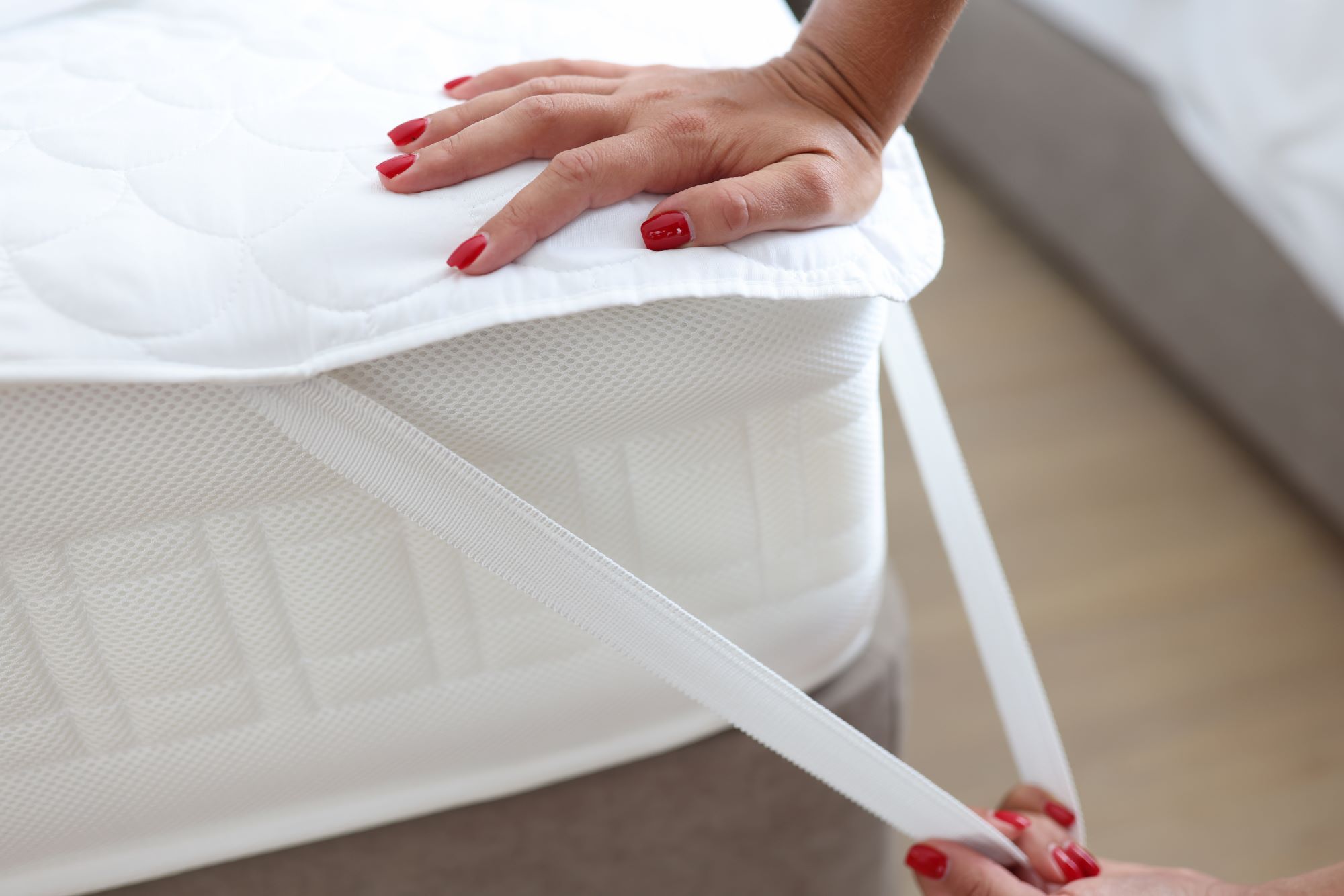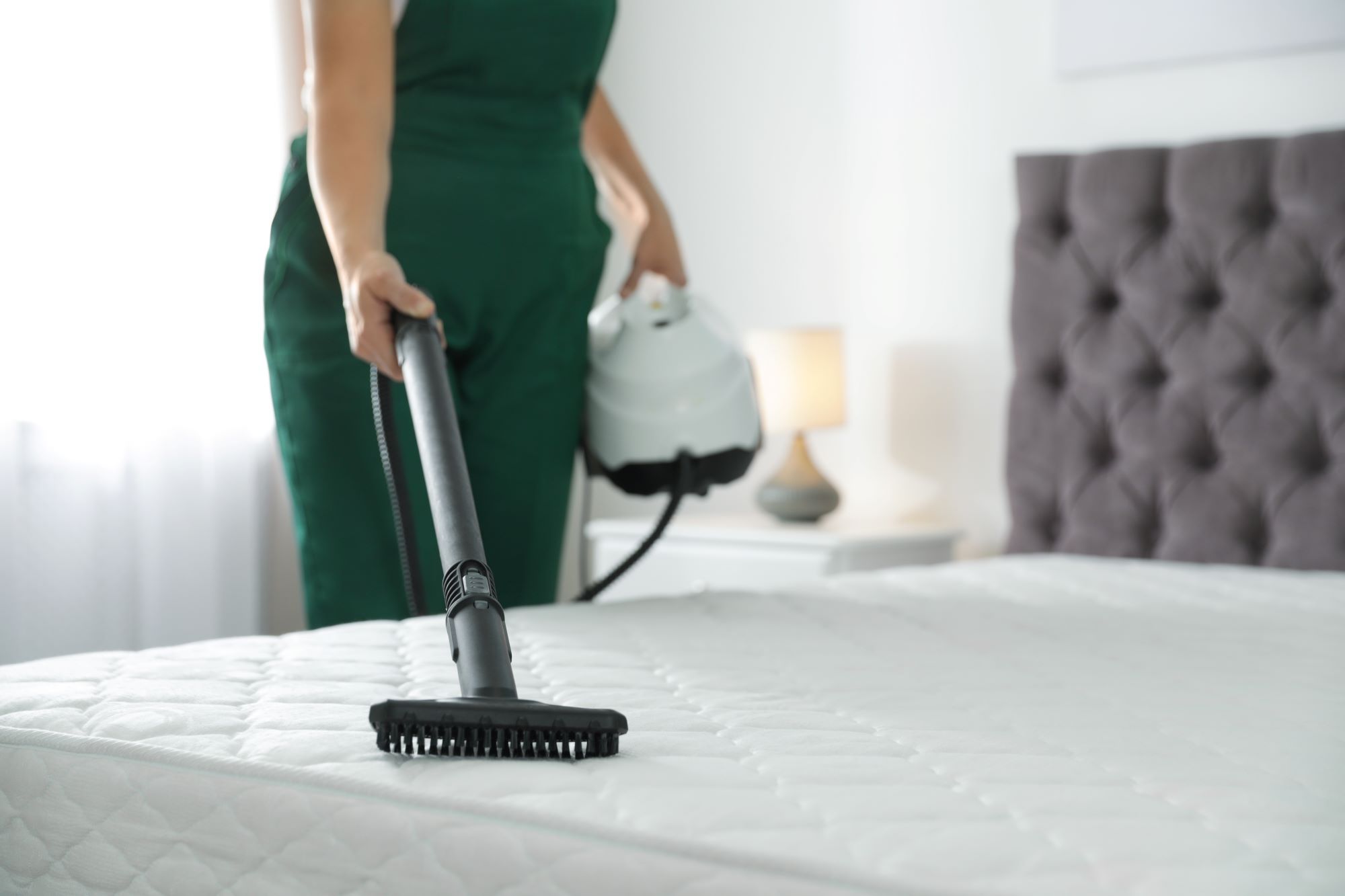A premium quality mattress is a major investment. It’s an investment not only in money but also in your comfort and well-being. To protect that investment, you want to maximize the lifespan of your mattress by paying attention to its care and maintenance from the day it’s delivered until the time comes to replace it. Follow these nine simple tips to maximize the lifespan of your mattress:
1. Put on a protective layer.
Before you put any sheets or blankets on your mattress, cover it with a waterproof (or water-resistant) but breathable mattress protector. It will prevent any spilled liquids or bodily fluids from reaching the mattress, keeping it clean and free of mold and mildew. Be sure to choose a mattress protector that’s machine-washable and clean it every six months. Bonus: The basic warranty that typically comes with a mattress will be void if it is soiled or stained. A mattress protector also keeps your warranty intact.
You may also choose to put a mattress pad or topper on your bed. These can help to keep your mattress clean, too, but mattress pads are designed to give your bed more cushioning and mattress toppers increase firmness. While pads and toppers give some protection, they are no substitute for a true mattress protector.
2. Set up support.
Your mattress needs a sturdy foundation to remain supportive and comfortable. Classic innerspring mattresses typically are paired with heavier-duty box springs to hold up your body weight. Foam and hybrid mattresses are commonly matched with either a solid base layer or a slatted bed frame. Some heavier mattresses may need a bed frame with legs in the center as well as at the ends. To keep your bed from sagging or otherwise deteriorating, be sure to stick to the manufacturer’s guidelines on frames and base layers.
3. Refresh your bedding.
You spend roughly one-third of your time in bed each day. During that time your sheets, pillowcase and blankets absorb sweat, oils and other normal excretions from your body. Your bedding also can host dust mites and other microscopic creatures that eventually can get into your mattress. If your pets sleep with you or on your bed, their dander and fur can also accumulate on your bedding.
The easiest mattress maintenance tip is as good for you as it is for your mattress. Wash your sheets, pillowcases and any other item that has direct contact with your body once a week. Clean your comforters and blankets every two to three months. This prevents any of the accumulated dirt and oil from staining your mattress.
4. Rotate regularly.
Most of us tend to sleep in the same places on our mattresses each night, causing lasting indentations to develop in the spots where most of our body weight lies. Slight impressions indicate that a mattress is breaking in around your unique shape, which can make it even more comfortable for you. Experts suggest that impressions of an inch or less are normal for an innerspring mattress while impressions on memory foam mattresses should be only about three-quarters of an inch or less. Deeper impressions are an indication that your mattress needs care and maintenance.
The simple way to help maintain a mattress’s shape and support is to change up where you sleep by flipping and rotating it. Double-sided mattresses can be turned over and around so your head and feet switch places. Rotate one-side mattresses 180 degrees. What’s the right mattress flipping frequency? Make it a habit to rotate and/or flip your mattress every three months, and your mattress will last longer.
5. Clean weekly.
Regular cleaning of your mattress will help it last longer and reduce your exposure to dirt, hair, skin particles, allergens, dust mites, pet dander and other debris that can accumulate on your bed. Cleaning your mattress can also help reduce or eliminate any odors it may harbor.
When you strip your bed to change the sheets each week, use a vacuum with an upholstery brush attachment over the mattress surface. Go slowly so the brush can dislodge small particles. Use the vacuum’s crevice tool to get the debris that tends to gather in the seams, crevices and edges of the mattress.

6. Remove stains.
When a spill or other fluids reach your mattress, clean up the mess as soon as possible to prevent lasting discoloration and permanent damage. The basic instructions for dealing with spills and other sources of stains is the same for innerspring, hybrid and memory foam mattresses. Simply blot the spill gently with a clean cloth and use a mild detergent such as liquid dish soap mixed with water to clean the affected area. Use room temperature water, not hot water. And avoid rubbing the stained area with your cloth because that can spread the stain and work into the mattress’s fibers or foam rather than removing it.
Memory foam mattress maintenance takes a little extra caution because memory foam absorbs moisture and takes a long time to dry, creating a breeding ground for bacteria, mold, mildew and odors. Liquids may even cause the memory foam to disintegrate over time. Use as little water as possible when cleaning up stains on memory foam and never use a steamer or carpet cleaner, which can oversaturate the mattress.
7. Eliminate odors
As your mattress ages, it can begin to emit a funky odor, even after you wash the bedding. For that reason, one of the most important mattress care tips is to deodorize it every two to three months.
How do you eliminate mattress odors? Take off the blankets, sheets and mattress protector and sprinkle ordinary baking soda all over the mattress. A light dusting is plenty. The baking soda will gradually absorb excess moisture and trap odors, just like it does in your refrigerator. Leave the baking soda on and the mattress without bedding for 10 to 12 hours. At that point, simply vacuum up the baking soda and remake your bed.
8. Repair and renew.
You can deal with some minor mattress problems on your own. Loose or broken coils can make an innerspring mattress sag or feel uneven. Try to fix them by carefully removing the mattress cover, then identify the problem springs. If they’re loose, tighten the screws that hold them inside the frame. If you want to try replacing a broken spring, look for replacements at mattress stores, home centers and online outlets.
Don’t wait to take care of a torn mattress cover or seams. The damage can get worse if you ignore it. Start by cleaning the area around the tear with a damp cloth and let it dry. Then apply a fabric patch to the damaged area and let it dry completely before putting the mattress cover back on.
9. Replace wisely
These mattress care tips can ensure your bed stays comfortable and healthful for years, and helps extend the life of your bed. But your mattress will not last forever. Premium mattresses can last 10 years or more, while budget brands may lose their support after eight years. Be alert to back or neck pain when you wake up in the morning, a sign that your mattress is sagging or is no longer supportive. Look for dramatic dips or soft spots in your mattress. Any of these problems indicate that you may need to replace your mattress.
When you are ready for a new mattress, take notice of the warranties that come with our options. Mattress maintenance is important, but you want to be sure your investment is protected from defects and other problems. It’s also advisable to review a high-quality mattress before buying a new one, to make sure it checks the boxes on everything you need.






